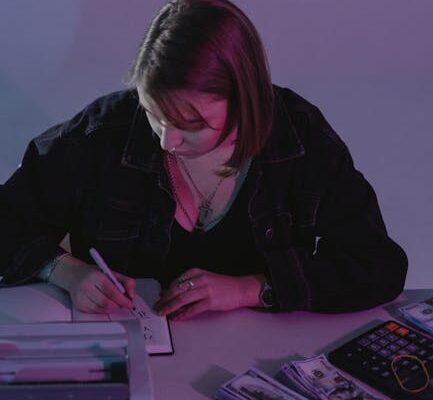For nearly 30 years, I worked the nine to five as a medical doctor, and I built a lot of equity in a house. A huge portfolio of shares, a bank full of savings and a retirement account fit to burst. I mean, 30 years as a doctor, right? Well, no. And that's because my money management skills were almost zero. Actually probably worse than zero. You see, I had a very particular set of skills I had acquired over a very long career, which made me a nightmare for people like financial advisors. I'd done it all. Broken every rule and ignored every piece of advice I'd received. Spent more than I earned, bought houses just before market crash, traveled a lot and spent money on toys like campervans and motorbikes, mostly to make for a job that made me incredibly unhappy. And that retirement account. Well, I'd quit paying into that many years ago. At age 50, I had virtually no savings in the bank. Come to think about it. You should probably quit watching this video right now, as I'm the last person in the world, you should be taking any sort of advice from.
However, I managed to turn things around in a short period of time. Two years to be exact. And I'm going to tell you the steps I took to do that. So let's get straight into it. Before I do, however, just a small disclaimer. I'm not a financial advisor, as you probably now gather. Don't take this as financial advice. It's edutainment. I'm just explaining the steps I took to quit my job and turn around my financial situation. Okay. Step one, I started recording where I was financially. I read this book about eight years ago by Vicki Robbins, which I've talked about before on this channel.
And it talks about this exercise, which I did, and then modified. I went out and bought some big sheets of graph paper and stuck it on my kitchen wall. Doesn't have to be your kitchen wall, as long as it's somewhere you see every day as a reminder of your mission. On the left, the Y axis, I put the amount I was earning in pounds from my job. This can be in any currency you earn. And on the bottom or X axis, the months of the year, January, February, March, and so on.
Then I took three colored pens, red, blue, and green. Now each month I would plot my job income, in blue, and draw a line from month to month. It could also be every two weeks if that's how you get paid. In red, I would plot my total expenses over that same period of time to track my expenses. I used an app on my iPhone called Spending Tracker. Every time I spent money, I would record it in the app. It's easy to record everything you spend and gives you the total at the end of each month, there are many apps that will do similar. You could even do the same in a notebook.
I just find the phone easier as I have it on me all the time. And I can record as I spend. Now with the green pen. And this gets a little bit more interesting. You add up your second income. This could be from your online business. Income you're starting to build. Dividend income from shares. Royalties from books. That's how I started. Rental income. You get the idea, but what I also did was add to this potential income I could receive from any uninvested savings I had. And I would use a very conservative 4% rate. So, for example, if I had $100,000 of savings, I would multiply this by four, divide by 100 and divide by 12 to give me a monthly amount. This would then get added to any other income amount as mentioned above. And this would be plotted each month in green on the graph. The aim is to have the red line below the blue line and so make savings each month. And we want to see the green line slowly, or quickly, increasing each month. It's a great motivator.
When the green line eventually goes over the red line, you are free. You can quit your job. It means your second source of income now covers your expenses. But how can we speed this up? Well, this starts with step two. List your recurring expenses. I listed every single expense I had and took an honest look at them. And then put a line through every single one I could cancel straight away. Now you need to be ruthless about this. You're on a mission here.
Remember no Netflix, Amazon prime, cable subscriptions, magazines subscriptions, etc. Put a line through them. Log onto those sites and cancel. Step three, record your monthly expenses. Where is your money actually going? Becoming financially independent is a bit like dieting. When I was a doctor, nearly every patient who wanted to lose weight would swear they weren't eating much or eating healthly. So I'd send them away with a food diary and I'd say almost 100%, they could not believe the amount they were eating and what they were eating. All of those snacks, quick bag of chips here and there a candy bar. It would all quickly add up. And so it is with your finances. So use an app like the one I mentioned earlier, or notebook and record every single outgoing and review every month.
Ask yourself, where can I cut down? Could be those daily coffees, parking fees, payments on vehicles, even a mortgage payment. Remember you are on a mission. This is not forever. What did I do? Well, I sold a campervan, motorbike I owned. I sold my house, moved to rental accommodation and then bought and moved onto a boat. Yes, I know that's a bit extreme, but not only was it a great lifestyle choice, but it reduced my monthly rental outgoings by about two thirds. I also cut out those subscriptions as mentioned like Netflix and Amazon prime. Now what about those debt repayments? If you don't touch them, it may take you a bit longer to get your second income to build and cover those debt repayments. If you can pay off some or all of those debts with the savings, made from reducing your outgoings, then you may reach your goal quicker. What I did, first of all, was make sure I had six months of savings to cover my expenses and then used savings each month to pay off my debts.

Your red line of expenses will reduce as your debts get paid off. Now, what I've told you only covers one side of the equation, the outgoings or expenses. That red line on the graph. What we need to address next is the incomings or second income. This is going to contribute to that green line on the graph. And the plan is to get that green line higher than the red line as soon as possible. So, we go on to step four, and this is where your work comes in.
Whilst doing the above steps I also started work on my side income. I did it with publishing no content and no content books on Amazon. How you do it will depend on your preferences and skills or willingness to learn new skills. I have a whole book tutorials playlist here on this channel that walks you through the whole process and two videos in particular that will get you started. You could literally watch them today and get your first book published today. I'll leave a link to those two videos in the description below. Many have contacted me and said, you know, within a couple of hours of watching, they've managed to publish their first book and get started on this path. From my graph, I reduced my expenses and worked out how many books I needed to sell a day to reach my goal. It was something like 40 a day, about $80 a day, bringing my monthly income to around $2,400 a month. I put that on a sticky note on the kitchen wall. Again, a great reminder and motivator. Other ways that I like of building a side income are those methods that rely on digital content.
Niche blogs, take a look at the income school YouTube channel for something like that. Merch on sites like Redbubble or Merch by Amazon creating an online course. Now that's a biggie. I like models where you build digital content. It's cheap to create and cheap to store online. Personally, I think a YouTube channel is one of the easiest and fastest ways to build an online income. And you don't even have to show your face. Publishing books allowed me to quit my job and then gave me the time and opportunity to work on this YouTube channel, which then saw my income rapidly increase, which then led onto me, being able to not only quit my job, but become location independent and move to the other side of the world.
So you can visit places like this and pursue my love of sunshine. Now, we have step five, which is probably the hardest yet will make the biggest impact to your life. And congratulations for getting this far. And number five is commitment. And that's exactly what I did on the 1st of January 2020. At the end of 2019, I decided I had had enough of procrastinating worrying what other people would think and decided to pursue something I'd always wanted to do and create a video a day and build a YouTube channel. This soon turned into three videos a week, which I maintained for around a year, then went to one video a week. What does commitment actually mean? It means sacrifice and often sacrificing time that you would've spent on something else. Netflix, Instagram, YouTube, TikTok, TV, that night out it. And what this will give you is time, time to pursue your mission. You need to take an honest look at where you are spending your time. You can find an hour here or there every day that you can use to work on your second income. I was working in a court taking medical evidence and I would sit there, have my laptop open and be creating an uploading books.
Even whilst my son was at tennis training or at tournaments, I would be doing the same. It was short-term sacrifice to meet those long-term goals. And that's what I mean by commitment. There's a saying that goes along the lines of when was the best time to start an online business two years ago. When was the second best time today, now, right this very moment. Finish the video, of course, but stop putting obstacles in your way. Stop trying to get all your ducks lined up in a row. A lot of people ask me before even starting, they ask me about taxes, registering a business, what brand name to use should I then copyright all my work.
It's all procrastination. There is no excuse to not start today. Register your KDP account and upload a simple book and commit to it. Get started. It took me two years from the day I decided to commit to this, to achieve my goals. For you it could be longer, or it could be shorter. There are many factors that balance both sides of that equation of income and expenses and will depend on your individual circumstances. But if you do commit, you will get there. I used to hear those same words. If I can do it, anyone can. But you know what? It's true and I'm in no way special. These five steps helped me and may help you.
I sincerely hope so. That video I mentioned getting started today and publishing notebooks on Amazon it's right here. And we'll walk you through the creation process step by step. Thank you very much for your time. It's very much appreciated. Let me know what you think in the comments below and until next time and goodbye..
You might be interested in exploring the concept of financial freedom as it relates to escaping the traditional 9-5 grind. Speaking of financial freedom, you might find the topic of Financial Freedom particularly enlightening. Additionally, if you’re curious about various strategies for improving your financial literacy, check out the Financial Literacy article. And for those considering alternative lifestyles, the concept of Minimalism could offer valuable insights into simplifying your life and reducing expenses. Each of these topics could provide you with essential information and inspiration as you navigate your own journey away from the conventional work routine.


